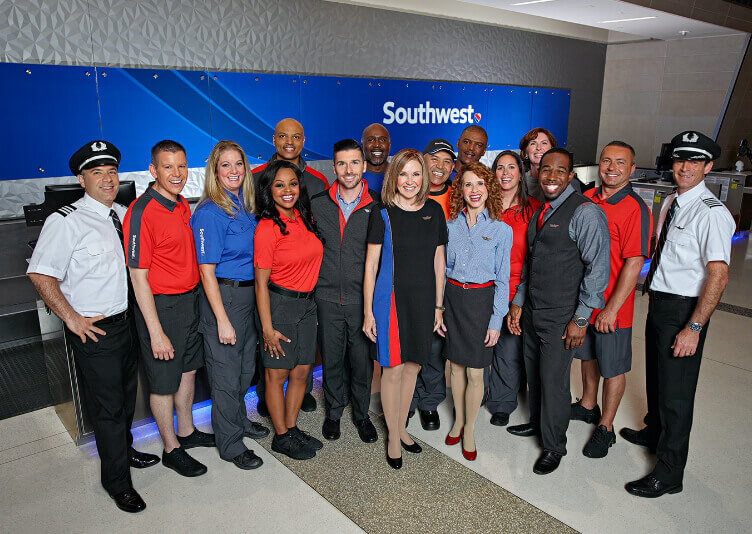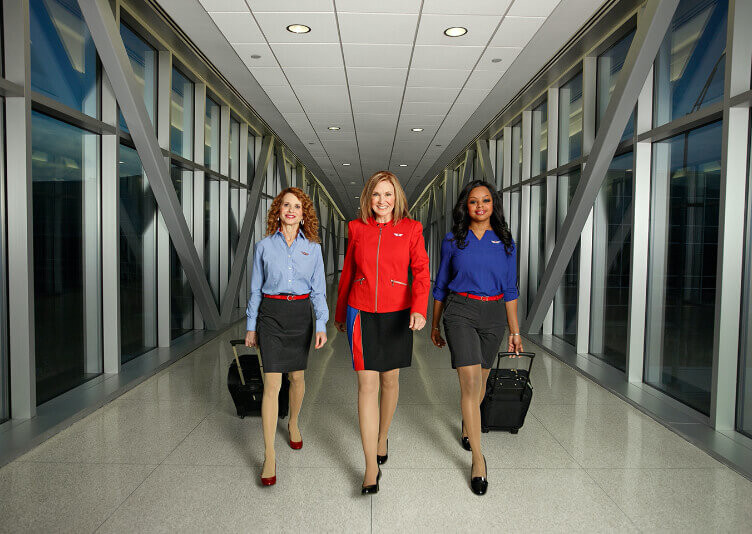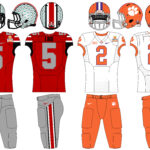Southwest Airlines, known for its distinctive brand and employee-centric culture, recognized that their visual identity was evolving. This realization prompted leadership to initiate a comprehensive uniform upgrade, envisioning a fresh and modern look that would resonate with both employees and customers. The existing uniforms, introduced in 1996, had served their purpose effectively, projecting an image of a relaxed and approachable airline with their soft-collared polos and comfortable pants. These original uniforms successfully communicated a sense of ease and comfort, mirroring the airline’s friendly service.
However, as the airline moved forward, there was a desire to capture a more contemporary feel while retaining the core values of comfort and approachability. Sonya Lacore, Vice President of Inflight Operations and a former Flight Attendant, spearheaded this ambitious project. Her vision was to create a uniform that would send an equally powerful message as the original, but for a new era. Crucially, Lacore decided against imposing rigid design parameters from the outset. Instead, she championed an innovative approach: empowering Southwest employees to be the primary voices in shaping the design, feel, and overall aesthetic of their new uniforms.
Lacore emphasized the practical realities of the job, stating, “I know when you’re out doing your job—stretching, bending, lifting, whatever it may be—there is a gap sometimes between what looks good and what feels good. [But] I really believed we could have it all. And I knew the only way to do that was to engage Frontline Employees.” This commitment to employee input, while unconventional, became the cornerstone of the entire uniform redesign process.
This democratic approach was met with resistance from some initial design agencies, who were accustomed to more traditional, top-down design processes and shorter uniform lifecycles. However, Southwest remained steadfast in their commitment to employee involvement, famously declaring, Not a problem. We have our own designers, thank you very much. They’re called our Employees.
From this point, the project gained momentum rapidly. Southwest partnered with a design firm willing to embrace their collaborative philosophy and assembled a diverse design team of 43 employees. This team was intentionally diverse, representing various departments, body types, heights, ethnicities, genders, and fashion preferences within the Southwest family. Ensuring the uniforms would be suitable for the wide range of roles, from pilots to ground crew, and reflect the diversity of the workforce was a key consideration.
 Southwest Airlines employee uniform design team research in Chicago
Southwest Airlines employee uniform design team research in Chicago
One of the challenges of designing new uniforms was ensuring they worked for the diversity of positions across the Southwest Family.
The design team embarked on a research trip to Chicago, exploring various retail stores and drawing inspiration from current fashion trends. These excursions were followed by lively and passionate discussions, where team members debated the strengths and weaknesses of different design ideas and proposals.
Southwest’s objective was to provide employees with a wide array of options, moving away from a single, prescribed uniform. This meant that all styles, cuts, and colors were open for consideration. The team explored various questions: Should bow ties be incorporated? The consensus was generally negative, particularly among employees working below the wing. What about shorts? The team agreed to retain shorts but proposed a sportier redesign. Color schemes proved to be a significant point of discussion, with charcoals and blacks emerging as strong contenders, alongside richer primary colors that reflected the airline’s brand.
Through numerous meetings and collaborative sessions, the design team refined their vision, establishing a set of guiding principles that captured the desired balance: We are going to be professional, but not too uptight. We are going to be fun but not hokey. We’re going to be casual, not sloppy.
These guidelines paved the way for the development of a striking new uniform collection. The collection included a wide range of garments – shorts, pants, polos, blouses, a skirt, and two dress styles – ultimately comprising 75 mix-and-match pieces. The color palette and design elements were particularly impactful. Drawing inspiration from Southwest’s aircraft liveries, blues and reds were incorporated as narrow stripes along hemlines and shoulders, injecting a vibrant and recognizable brand element into the uniforms.
The years 2015 and 2016 were dedicated to meticulous development and refinement. Once fabrics were selected, Southwest prioritized ethical sourcing, sending team members to factories overseas to ensure compliance with labor standards and ethical manufacturing practices. Early prototypes were then distributed to 130 employees for real-world wear testing. This crucial phase allowed employees to provide feedback on comfort, functionality, and durability under actual working conditions.
 Southwest Airlines new uniforms showcasing brand colors and modern design
Southwest Airlines new uniforms showcasing brand colors and modern design
With bold accents and familiar colors, the new uniforms were the perfect way to bring the Southwest brand to life.
Flight Attendant Tracye Tipps, a member of the design team, emphasized the rigorous testing process: “We did a lot of wear-testing to make sure that they were comfortable, that they were functionable, and we did it throughout the entire workgroup.”
Sonya Lacore and her team meticulously gathered feedback on every aspect of the prototypes. They assessed colorfastness, durability in various weather conditions, and stain resistance. Some pieces proved successful, while others required further refinement based on real-world performance.
By early 2016, the team was confident that they had achieved their goals. They organized a fashion show in Dallas for Chairman and CEO Gary Kelly and other Southwest leaders. The event, complete with a red carpet and music, generated immense excitement and anticipation.
Despite initial nervousness, the fashion show was a resounding success. As design team members modeled the new uniforms, Southwest leadership responded with enthusiastic applause and cheers. One mechanic, who had initially been hesitant to participate, was moved to tears, expressing her disbelief at walking a red carpet.
In June 2017, Southwest employees officially began wearing the new uniforms. The rollout was met with widespread pride throughout the company. After three years of dedicated effort, the new uniforms were undeniably and authentically Southwest – approachable yet professional, comfortable yet stylish, and both striking and personable.
The uniforms were not designed to cater to fleeting fashion trends or external pressures. Instead, they were created to instill pride in Southwest’s employees, empowering them to feel confident and positive about their appearance and representation of the brand every day.
Reflecting on the project, Sonya Lacore concluded, “I’ll tell you what I did learn through this. I already knew what you wear is important but I had no idea it was this important. When they look good, they feel good. And there’s so much power in that.” This sentiment encapsulates the core philosophy behind the Southwest Airlines uniform redesign – a project driven by employee collaboration and a deep understanding of the powerful connection between personal pride and brand representation, extending to every role from flight attendants to ground staff and even the esteemed Southwest Airlines pilots.

